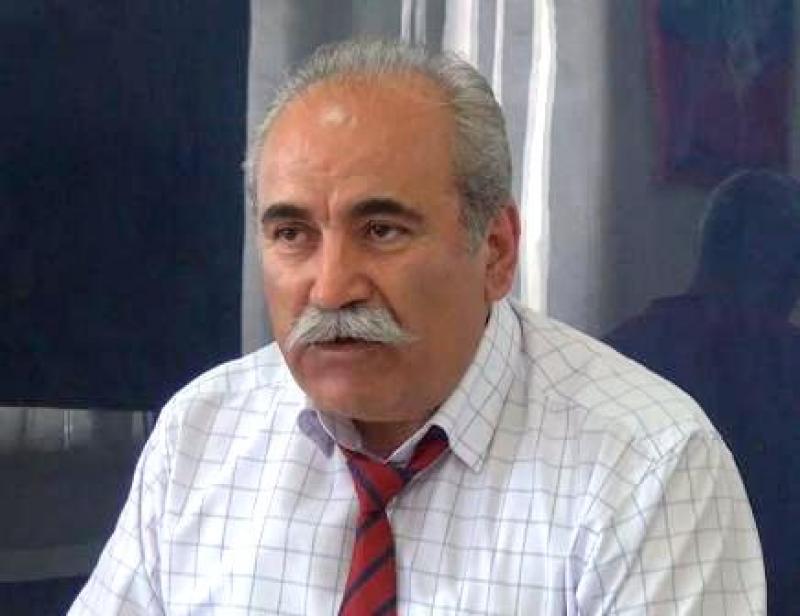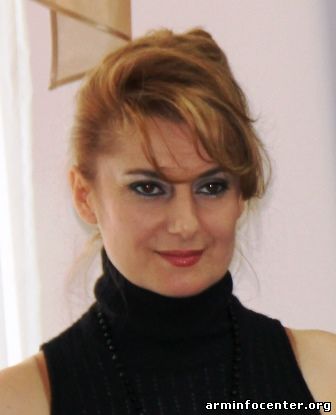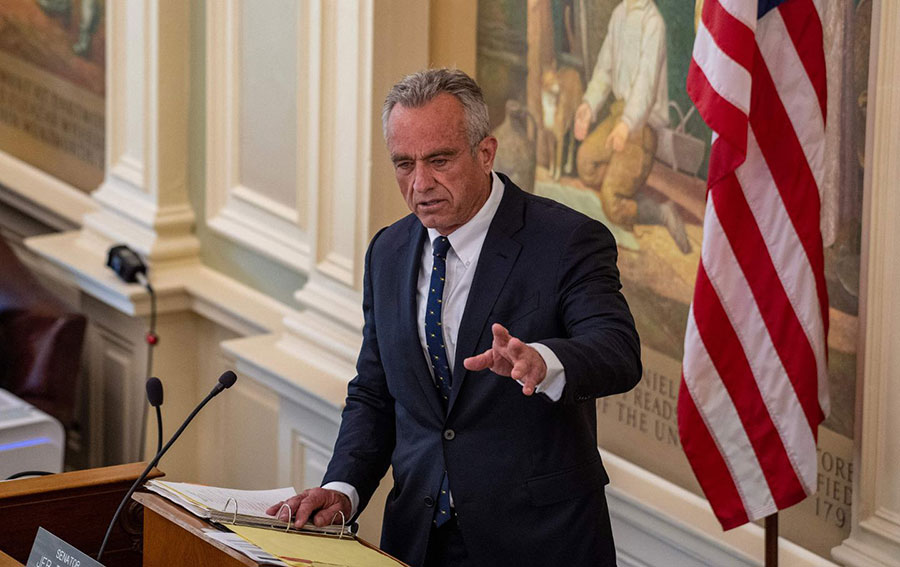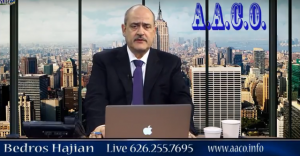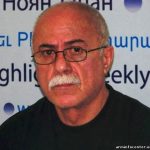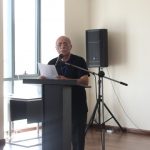
The official statement of the Minister of Culture of Azerbaijan of February 3, 2022 makes it clear that Azerbaijan, with well-planned actions, is consistently implementing the policy of eviction of Armenians from Artsakh, destruction and alienation of Armenian cultural heritage, and this time they openly threaten to remove and delete the inscriptionson Armenian churches in Artsakh. It can be inferred from the statement that a special working group has been set up, consisting of specialists in the history, culture and architecture of Caucasian Albania, as well as representatives of state structures. After “study” they must remove “fake writings, inscriptions and traces written or added by Armenians” on “Caucasian Albanian religious/Christian” structures in Artsakh (Karabakh). The Christian monuments in the territory of Artsakh and the inscriptions on them have been studied by specialists for more than a century, and their authenticity or nationality has never been problematic (except for the amateurish attempts and statements to falsify historical facts).
Valuable monuments of medieval Armenian architecture in Artsakh, such as Amaras Monastery, Dadivank, Khatravank, Gandzasar Monastery, Gtichavank, a great number of churches, including the famous Ghazanchetsots Cathedral in Shushi, are an organic part of Armenian architecture.
With their composition and decorthe monumental structures of High Middle Ages of Artsakh – the churches, gavits (narthex) and bell towers – are closely connected with the similar structures of historical Syunik and Ayrarat of the mentioned period. This wasalsoproven by research carried out by authoritative foreign scholars studying Armenian medieval architecture, including Jean-Michel Thierry (France), Professor Paolo Cuneo (Italy) and others.
Scientific analysis of the lithographic inscriptions and of the data that have reached our days through those inscriptions will not be able to prove that they are Caucasian Albanian, thus the best way to “Albanize” the cultural heritage of the Armenians of Artsakh is to destroy the lithographic data, as was demonstrated by the “Azerbaijani experience” of destroying or distorting the Armenian cultural heritage in the territory of Nakhichevan. There are no specialists in Azerbaijan studying Christian culture and monuments, as evidenced by their own publications, which have been limited to the presentation of Islamic architecture.
First of all, even if they had been added later, according to the accepted standards of preservation of monuments, it would be cultural vandalism to eliminate them, as the additions made in the following centuries are an integral part of the history of the given architectural monument.
It is beyond doubt that the above-mentioned commission has been set up to implement the program of the Armenian cultural Genocide, to alienate the cultural heritage of the Armenians of Artsakh from its real owner, to distort the history of the region.
With this statement, Azerbaijan once again declares to the world that it violates the freedom of thought, conscience and religion enshrined in the “Universal Declaration of Human Rights”, as well as the right to freely value the cultural heritage created by that freedom.
The aim of the theory of Artsakh monuments being Caucasian Albanian is to try to substantiate Azerbaijan’s claims to Artsakh historically, using science to serve their genocidal aspirations, first to justify the destruction of the Armenian presence in the now occupied territories of the Artsakh Republic, and then to create false “historical and cultural” preconditions to infiltrate into the territories currently defended by Russian peacekeepers.
The comprehensive study of the lithographic data of the monuments of Artsakh, which includes archeological, linguistic, artistic, theological, literary-sourceological and particularly historical examination of those inscriptions, clearly proves the Armenianness of those churches and their inscriptions.
It is known worldwide, that not only in the case of lithographic inscriptions, but also in the case of fabrications and falsifications of various literary compositions, it is immediately apparent that they were added later on. It is impossible to find any inscriptions dated earlier or added artificially in Old Armenian in the monuments of Artsakh.
Moreover, linguistically, in the case of both lithographs and manuscripts, it is a common pattern that the linguistic realities of the writing environment i.e., dialects, are expressed in the local written language. The elements of the Artsakh dialect are noticeable in the lithographic inscriptions of Artsakh, while we cannot find any trace of the supposed Caucasian Albanian language. This once again shows that this cultural heritage was created by the Armenians of Artsakh, stamping their local breath on the walls of architectural monuments. Not to mention the existence of hundreds of manuscripts and memoirs that have been inherited from the Artsakh writing centers, the contents of which supplement and reaffirm the source information evidenced in the lithographs.
Later additions to both manuscripts and architectural monuments are usually placed in the wrong place on the structure, since in the general architectural design, as a rule, the inscriptions related to the construction of a monument are usually engraved immediately after construction. From the point of view of the general structural composition and symbolism of a church, we can confidently state that the inscriptions of all the famous monuments of Artsakh are in the exact place where the inscriptions testifying to the construction of the churches were to be engraved immediately after the construction of those monuments.
Nor does historical examination show any record of historical or donation information concerning the construction of monuments in Artsakh, created on a later date but was attributed to an earlier period.
It is generally accepted that monuments are constructed in order to record remarkable events that took place in different periods of history. The monuments of Artsakh are no exception in this respect, and in the case of further repairs, additions of new buildings, donations and other memorable works, the tradition of drawing lithographs has been utilized. The inscriptions of churches in Artsakh refer exclusively to the Armenian environment, which confirms that these monuments were not only part of Armenian art from the day of their construction until the current manifestations of vandalism in Azerbaijan, but also their subsequent history represents an important and integral part of Armenian cultural heritage. This is doubly confirmed by the existence of landmark monuments, thousands of khachkars and tombstones, whose Armenian lithographic inscriptions are also a direct reflection of the existence of the Armenian environment.
Even if an attempt is made to carry out cultural vandalism in the current occupied territories of the Artsakh Republic, the photos, measurements and inscriptions of those monuments with their decodings and translations into Russian and various European languages will constitute substantial evidence for the accusation of cultural Genocide conducted by Azerbaijan and remain an intact testament on what and how those monuments looked like before their state-sanctioned destruction by Azerbaijan.
In fact, the policy of destruction and alienation of the Armenian cultural heritage is presented to the international community as a step towards the restoration of the religious rights of the Caucasian Albanian people, using for this purpose the representatives of the Udi people, who are being held as political hostages in Azerbaijan. At present, every effort is being made to implement the project of the newly-created “Udian” church. It has become a powerful tool for falsifying history, a national goal that is anti-Armenian. The Azerbaijani authorities do not miss the opportunity to announce that the “Udian” church, the legal successor of the “Caucasian Albanian” church, has the right to manage the churches declared Caucasian Albanian in Artsakh, historical Utik, and even in present-day Turkey by Azerbaijani manipulator historians.
It is well known from the testimonies of many historical sources that the Caucasian Albanian church has been closely connected with the Armenian Church throughout history. Three centuries after the traditional period of apostolic preaching, it was officially established by Gregory the Illuminator and his grandson Grigoris in the early 4th century, and later throughout history has been a part of the diocesan system of the Armenian Church.
The jurisdiction of the Caucasian Albanian Church originally extended to the territory of the kingdom of Caucasian Albania, which included the territory from the left bank of the Kura River to the Caspian Sea, the Caucasus Mountain range to the Derbent Pass (the episcopate was then located in Kapaghak, the capital of the kingdom). However, in 428, when the King of Kings of Sasanian Iran abolished the Arshakuni Kingdom of Armenia and established an administrative system of three marzpanates (provinces) in Transcaucasia, including peripheral regions of Armenia in neighboring marzpanates (Utik and Artsakh in Aghvank-Aran, and Gugark in Virk-Varjan), the jurisdiction of the Caucasian Albanian Church (in accordance with the principles of the medieval church-administrative division) also extended to the Armenian provinces of Utik and Artsakh, located on the left bank of the Kura River. In 462, after the provincial center was moved to the town of Chogh-Derbent, the seat of the Caucasian Albanian Church (which had already received the status of an archdiocese-Catholicosate) was established there. But soon, in the first decades of the 6th century, the seat of the Catholicosate was moved to the newly-built provincial town of Partav, seat of the marzban (in the region of Uti-Arandznak in the province of Utik), on the Armenian right bank of the Kura River.
At the beginning of the 16th century, the seat of the church was finally established in Gandzasar, in the center of Artsakh (in the previous century, Jalet, on the left bank of the Kura River, was also a Catholicosate). After that, it was known as the Catholicosate of Gandzasar, and as one of the dioceses of the Armenian Apostolic Church, and then in the 19th century it was transformed into a metropolitanate (archbishopric) of the Catholicosate of Etchmiadzin by the legal acts of the Russian tsarist authorities.
Surprisingly, in the Azerbaijani Caucasian Albanian rhetoric, a central place is given to the Udis – a people who, over the past 200 years, have been subjected to particularly cruel physical and moral persecution. In the 18th and 19th centuries, the political process of forced Islamization and assimilation of the Udis led to the almost complete disappearance of this most visible representative of the Caucasian Albanian heritage. However, the population of at least 43 Udi villages in the Nukhi district, in particular, in the Sheki, Oguz (former Vardashen) and Gabala (former Kutkashen) regions retained the Udi (Caucasian Albanian) identity and, despite linguistic Turkization and Islamization, continued to venerate Caucasian Albanian historical monuments and sacred places, celebrated Caucasian Albanian holidays, marked their national identity on epitaphs, etc.
Perhaps that is why during the interethnic clashes of 1918-1920 the Udis were subjected to the cruelest physical violence, destruction and expulsion by the Turkic-speaking Azerbaijanis. The population of the last Udi settlements – Vardashen, Mirzabeylu, Sultan Nukhi, Jorurlu and most of the population of the village of Nizh, fleeing persecution, were forced to finally leave their homeland, where their ancestors had lived for hundreds of years. After the expulsion of the Udis, “historical truth was restored” in Azerbaijan: the entire Caucasian Albanian material and cultural heritage was “corrected” or destroyed.
The 2-3 thousand Udis remaining in Azerbaijan are being used today to implement the policy of denial of the Armenian cultural heritage pursued by the Azerbaijani authorities. It is not for nothing that Azerbaijan does not sign the European Charter for Regional or Minority Languages (French: Charte européenne des langues regionales ou minoritaires) – the European convention for the protection and promotion support of languages used by traditional minorities.
Thus,
- especially emphasizing the “Nara Document of Authenticity”, the National Academy of Sciences of the Republic of Armenia announces that, in the event of a conflict, the cultural values require recognition of legitimacy, as well as the implementation of basic principles of UNESCO, according to which the responsibility for the protection and management of cultural heritage sites rests upon the community that created the cultural heritage and the authenticity of the cultural heritage should never be subordinate to the conflict and called into question (“NARA Document of Authenticity”, paragraph 8).
- The National Academy of Sciences of the Republic of Armenia considers that, as stated in the preamble to the 1954 Hague “Convention for the Protection of Cultural Property in the Event of Armed Conflict”, and reaffirmed in the 2016 UNESCO “Protection of Cultural Property: Military Manual”, being a vital part of the identity of humankind, the destruction of heritage deprives humankind of its irreplaceable values. As such, the erasure of the heritage of the Armenians of Artsakh can lead to an irreversible loss of cultural values and impoverish the cultural diversity of the world. The heritage of Artsakh was created by the Armenians of Artsakh in accordance with their ideas and skills, and the policy of Azerbaijan, as it is obvious, is aimed at falsifying and distorting that very heritage.
According to international standards and conventions, Azerbaijan should respect and uphold its responsibilities in protecting the heritage of the Armenians of Artsakh, and preserve its authenticity and integrity. And the very same convention, cited by the Ministry of Culture of Azerbaijan, in its Article 4, prohibits any act of vandalism, destruction or modification, and puts an absolute ban on acts of revenge against cultural values.
National Academy of Sciences of the Republic of Armenia
22.02.2022



